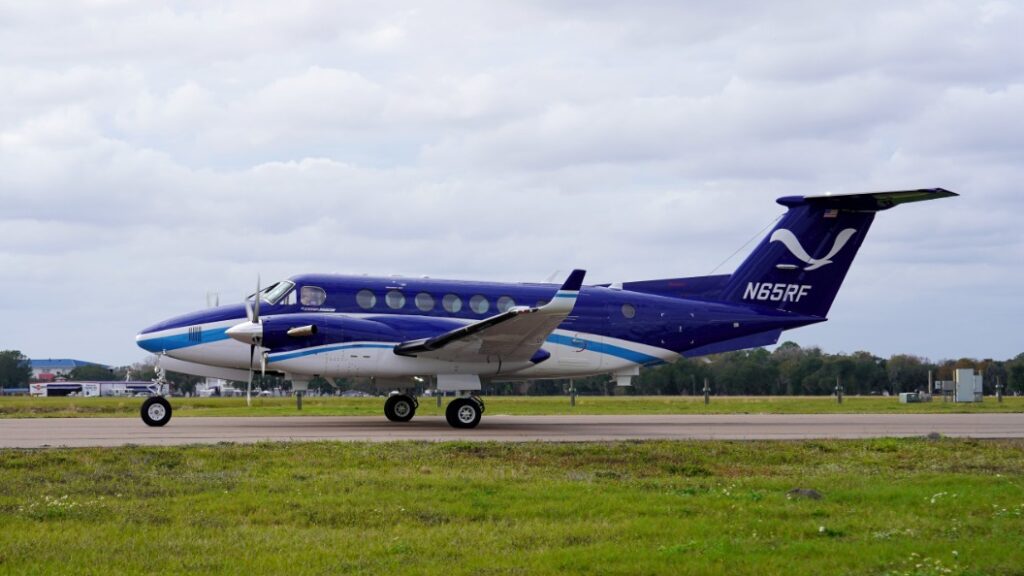NOAA welcomes third Beechcraft King Air to its Specialized Aircraft Fleet
Posted
Last Updated
By noaa.gov.
NOAA’s newest aircraft, a Beechcraft King Air 360 CER turboprop, has arrived at the NOAA Aircraft Operations Center in Lakeland, Florida.
The new aircraft, designated N65RF, is configured to support NOAA coastal mapping missions and aerial surveys of damage in communities after events like hurricane landfall, tornadoes or flooding. With a camera bay in the aircraft belly and work stations for sensor operators, the aircraft will be able to obtain and process vital aerial imagery in-flight, giving emergency managers rapid understanding of conditions on the ground.
The twin-engine aircraft was built at Textron Aviation’s factory in Wichita, Kansas, and modified by Avcon Industries (Newton, Kansas), as part of a $13.9 million contract to Textron Aviation, Inc.
“This new, high-performance aircraft will greatly enhance NOAA’s ability to collect data vital to forecasters, researchers and emergency managers,” said NOAA Corps Rear Adm. Nancy Hann, director of NOAA Marine and Aviation Operations and the NOAA Commissioned Officer Corps.
“The NOAA King Air aircraft contains cutting-edge technology that is helping unlock new capabilities for weather forecasting and data collection,” said Kansas Senator Jerry Moran. “I worked to secure funding for this aircraft to expand the great work being done at Textron’s Wichita location to aid in NOAA’s mission of forecasting extreme weather and responding to flooding, drought and more.”
“We are honored the King Air 360CER aircraft continues to be the aircraft of choice to fill a variety of critical mission needs for NOAA,” said Ron Draper, president and CEO, Textron Aviation. “The aircraft’s ability to carry a wide range of special missions equipment, combined with its extended range performance, makes it a powerful and reliable platform to carry out the agency’s unique missions during aerial surveys of damage in communities after events like hurricane landfall, tornadoes or flooding.”
read more at noaa.gov

